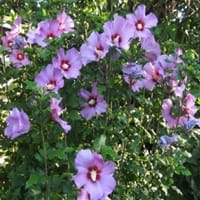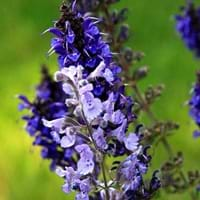Life Span
Perennial
Perennial
Origin
Australia
Hybrid origin
Types
Not available
not available
Habitat
subtropical regions, Temperate Regions, Tropical regions, Warmer regions
Alpine Meadows, shaded woods, Shady Edge
USDA Hardiness Zone
9-11
4-8
Sunset Zone
H1, H2, 13, 14, 15, 16, 17, 20, 21, 22, 23, 24
1a, 1b, 2a, 2b, 3a, 3b, 4, 5, 6, 7, 8, 9, 10, 11, 12, 13, 14, 15, 16, 17, 18, 19, 20, 21, 22, 23, 24
Habit
Upright/Erect
Cushion/Mound-forming
Flower Color
Blue, Purple, Blue Violet
Lavender, Blue Violet
Flower Color Modifier
Not Available
Bicolor
Fruit Color
Not Available
Not Available
Leaf Color in Spring
Dark Green
Light Green, Gray Green
Leaf Color in Summer
Dark Green
Light Green, Gray Green
Leaf Color in Fall
Dark Green
Light Green, Gray Green
Leaf Color in Winter
Dark Green
Light Green
Leaf Shape
Irregular
Pinnate
Plant Season
Spring, Summer, Fall, Winter
Spring, Summer, Fall
Sunlight
Full Sun
Full Sun, Partial Sun, Partial shade
Type of Soil
Clay, Loam, Sand
Loam, Sand
The pH of Soil
Acidic, Neutral, Alkaline
Neutral
Soil Drainage
Well drained
Well drained
Bloom Time
Indeterminate
Late Spring, Early Summer, Summer, Late Summer, Early Fall
Tolerances
Not Available
Drought
Where to Plant?
Ground, Pot
Container, Ground
How to Plant?
Seedlings, Semi-hardwood cuttings
Cuttings, reseeds, Runners
Plant Maintenance
Medium
Medium
Watering Requirements
Average Water Needs, Do Not over Water, Requires regular watering
Average Water Needs, Keep the Soil well drained
In Summer
Lots of watering
Lots of watering
In Spring
Moderate
Moderate
In Winter
Average Water
Average Water
Soil pH
Acidic, Neutral, Alkaline
Neutral
Soil Type
Clay, Loam, Sand
Loam, Sand
Soil Drainage Capacity
Well drained
Well drained
Sun Exposure
Full Sun
Full Sun, Partial Sun, Partial shade
Pruning
Remove damaged leaves, Remove dead branches, Remove dead leaves
Remove damaged leaves, Remove dead branches, Remove dead leaves
Fertilizers
All-Purpose Liquid Fertilizer
All-Purpose Liquid Fertilizer
Pests and Diseases
Red blotch, Rust aphids
Red blotch
Plant Tolerance
Not Available
Drought
Flower Petal Number
Single
Single
Fragrant Bark/Stem
No
Yes
Foliage Texture
Medium
Medium
Foliage Sheen
Matte
Matte
Attracts
Butterflies, Flying insects, Hummingbirds, Insects
Bees, Butterflies, Hummingbirds
Allergy
Not Available
Anaesthesia, Irritation to urinary tract
Aesthetic Uses
Borders, Showy Purposes, small hedge
Beautification, Landscape Designing, Showy Purposes
Beauty Benefits
Not Available
Not Available
Environmental Uses
Air purification
Air purification
Medicinal Uses
High blood pressure, lowering blood pressure
Cough, Menstrual Disorders, Nerve pain
Part of Plant Used
Flowers, Leaves
Leaves
Other Uses
Decoration Purposes
Can be made into a herbal tea, Oil is used in mosquito repellents
Used As Indoor Plant
Yes
Yes
Used As Outdoor Plant
Yes
Yes
Garden Design
Container, Feature Plant, Hedges, Mixed Border, Rock Garden, Wall
Container, Groundcover, Mixed Border, Rock Garden, Wall
Botanical Name
ALYOGYNE huegelii 'Monle'
NEPETA mussinii
Common Name
Blue Hibiscus, Purple Delight Blue Hibiscus
Catmint
In Hindi
Blue Hibiscus
कटमींट
In German
Blauer Hibiskus Baum
Katzenminze
In French
Bleu Hibiscus Arbre
Catmint
In Spanish
Azul árbol del hibisco
catmint
In Greek
Μπλε Hibiscus Tree
catmint
In Portuguese
Árvore azul do hibiscus
nêveda
In Polish
Niebieski Hibiscus Drzewo
catmint
In Latin
Hibiscus lignum blue
nepetae mixtam
Phylum
Magnoliophyta
Magnoliophyta
Class
Magnoliopsida
Magnoliopsida
Family
Malvaceae
Lamiaceae
Clade
Angiosperms, Eudicots, Rosids
Angiosperms, Eudicots
Subfamily
Malvoideae
Not Available
Number of Species
Not Available
Not Available
Importance of Blue Hibiscus and Walkers Low Catmint
Want to have the most appropriate plant for your garden? You might want to know the importance of Blue Hibiscus and Walkers Low Catmint. Basically, these two plants vary in many aspects. Compare Blue Hibiscus and Walkers Low Catmint as they differ in many characteristics such as their life, care, benefits, facts, etc. Every gardener must at least have the slightest clue about the plants he wants to plant in his garden. Compare their benefits, which differ in many ways like facts and uses. The medicinal use of Blue Hibiscus is High blood pressure and lowering blood pressure whereas of Walkers Low Catmint is Cough, Menstrual Disorders and Nerve pain. Blue Hibiscus has beauty benefits as follows: Not Available while Walkers Low Catmint has beauty benefits as follows: Not Available.
Compare Facts of Blue Hibiscus vs Walkers Low Catmint
How to choose the best garden plant for your garden depending upon its facts? Here garden plant comparison will help you to solve this query. Compare the facts of Blue Hibiscus vs Walkers Low Catmint and know which one to choose. As garden plants have benefits and other uses, allergy is also a major drawback of plants for some people. Allergic reactions of Blue Hibiscus are Not Available whereas of Walkers Low Catmint have Anaesthesia and Irritation to urinary tract respectively. Having a fruit bearing plant in your garden can be a plus point of your garden. Blue Hibiscus has no showy fruits and Walkers Low Catmint has no showy fruits. Also Blue Hibiscus is flowering and Walkers Low Catmint is flowering. You can compare Blue Hibiscus and Walkers Low Catmint facts and facts of other plants too.





